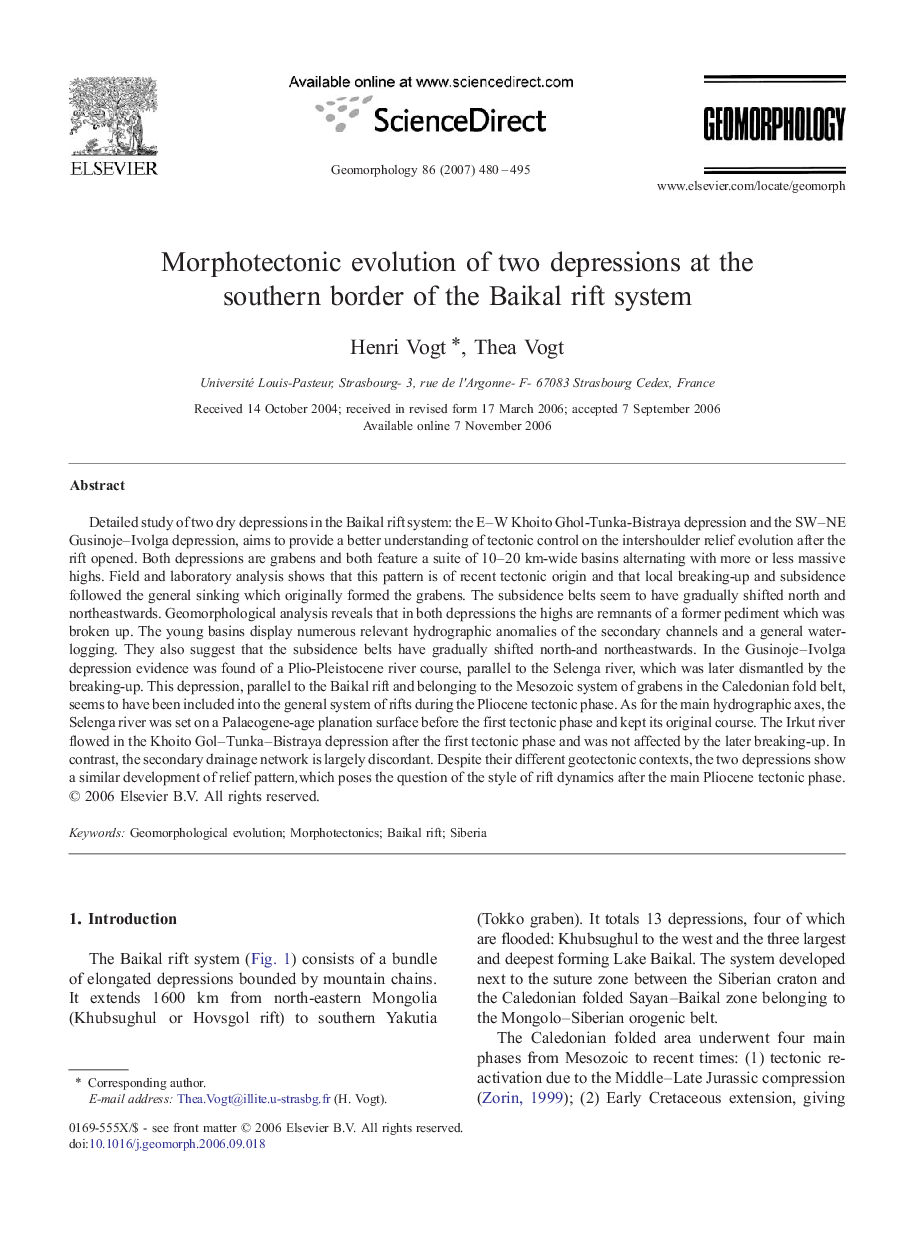| کد مقاله | کد نشریه | سال انتشار | مقاله انگلیسی | نسخه تمام متن |
|---|---|---|---|---|
| 4687266 | 1635579 | 2007 | 16 صفحه PDF | دانلود رایگان |

Detailed study of two dry depressions in the Baikal rift system: the E–W Khoito Ghol-Tunka-Bistraya depression and the SW–NE Gusinoje–Ivolga depression, aims to provide a better understanding of tectonic control on the intershoulder relief evolution after the rift opened. Both depressions are grabens and both feature a suite of 10–20 km-wide basins alternating with more or less massive highs. Field and laboratory analysis shows that this pattern is of recent tectonic origin and that local breaking-up and subsidence followed the general sinking which originally formed the grabens. The subsidence belts seem to have gradually shifted north and northeastwards. Geomorphological analysis reveals that in both depressions the highs are remnants of a former pediment which was broken up. The young basins display numerous relevant hydrographic anomalies of the secondary channels and a general water-logging. They also suggest that the subsidence belts have gradually shifted north-and northeastwards. In the Gusinoje–Ivolga depression evidence was found of a Plio-Pleistocene river course, parallel to the Selenga river, which was later dismantled by the breaking-up. This depression, parallel to the Baikal rift and belonging to the Mesozoic system of grabens in the Caledonian fold belt, seems to have been included into the general system of rifts during the Pliocene tectonic phase. As for the main hydrographic axes, the Selenga river was set on a Palaeogene-age planation surface before the first tectonic phase and kept its original course. The Irkut river flowed in the Khoito Gol–Tunka–Bistraya depression after the first tectonic phase and was not affected by the later breaking-up. In contrast, the secondary drainage network is largely discordant. Despite their different geotectonic contexts, the two depressions show a similar development of relief pattern,which poses the question of the style of rift dynamics after the main Pliocene tectonic phase.
Journal: Geomorphology - Volume 86, Issues 3–4, 1 May 2007, Pages 480–495